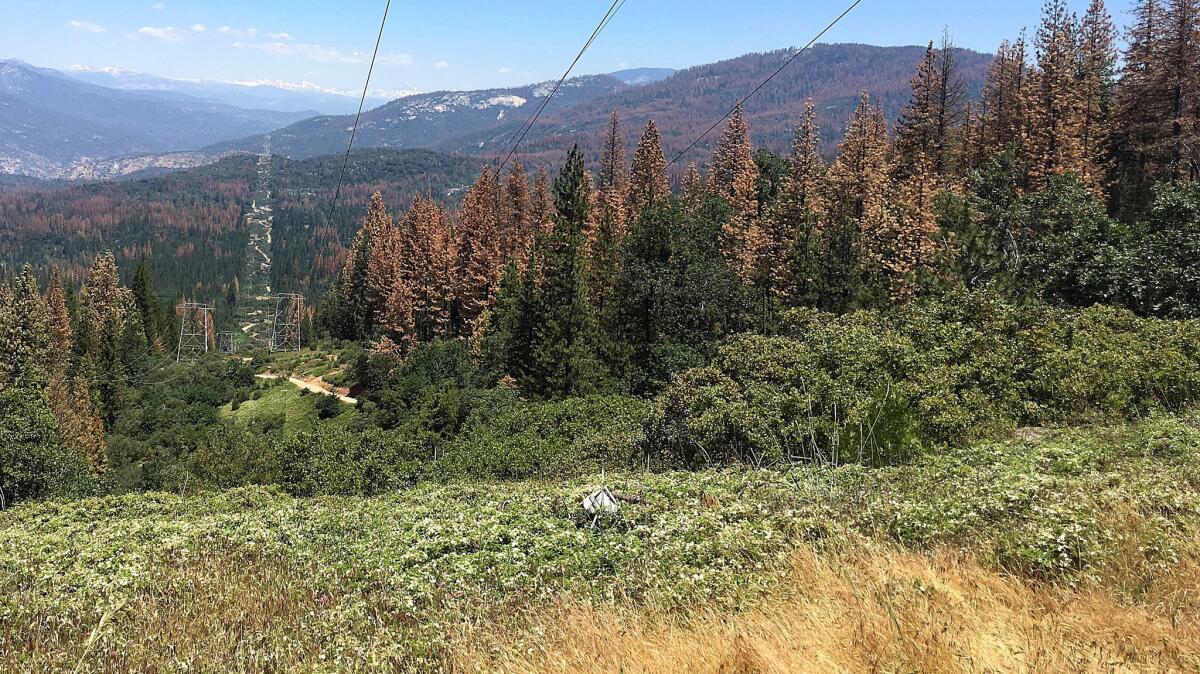Editorial: California needs to conserve water like the drought is here to stay

- Share via
The water level in Lake Shasta, California’s largest reservoir, had plunged to less than a third of normal by the end of last year. Then came the El Niño rainfall, which by April had tripled the volume of water in the lake. The story is similar in Trinity Lake, part of the same network of federal projects in the far northern portion of the state that regulate the flow of water to the Sacramento River on its journey south toward the Sacramento-San Joaquin River Delta and San Francisco Bay.
In the northern Sierra, water levels were also perilously low in the state’s second-largest reservoir, Lake Oroville on the Feather River. But snowmelt in that region has revived the lake and given some relief to the State Water Project, which also controls the water that eventually finds its way down the Sacramento River – and into the delta and the California Aqueduct, down the San Joaquin Valley, over the Tehachapi Mountains and into Southern California.
So we’re good, right? Here in Los Angeles, the El Niño of 2016 was just a rumor, but in the northern part of the state the storms really did show up and fed the reservoirs that in turn feed us. California is a single state with a system of dams and aqueducts that interconnect the people and their water supply and make the north’s wet good fortune the entire state’s good fortune as well, even as the Southern California drought persists.
If only it were that simple.
The wet winter in the north certainly moves the southern part of the state back from the brink of crisis, but only by a half a step. Los Angeles historically has gotten much of its water from the eastern slope of the southern Sierra, where El Niño paid only a brief visit this year. Much of the rest of our supply comes from the Colorado River via Lake Mead, which stands now at its lowest level since Hoover Dam opened and the lake was filled in the 1930s. California’s water supply is not merely a function of rainfall and drought in California, but of conditions in the Rockies and elsewhere in the Western states, which are suffering from their 16th straight year of drought. Water rationing in neighboring states looms. Supplies of water may be cut to California before long. Just as Los Angeles is buffered from its own dry winters by storms in the north, it suffers from the dry winters out of state.
There is also a limit to the speed at which Sacramento River water can make its way past the delta, which serves as a kind of giant switching station for water flow around the state. Reservoirs south of the delta can be refilled, but only at a much slower pace than those to the north that are fed directly by the rain and snowmelt. Groundwater also was depleted by drought and takes longer to recharge.
Those limits spotlight the importance of “conveyance,” one of many code words for the proposed tunnels that would bypass the delta and take Sacramento River water directly to the California Aqueduct, and of south-of-delta water storage – code words for construction or enlargement of dams, or perhaps wiser development of groundwater storage, or both. But none of those things will bring any more water online in the short term.
These are all things that the state Water Resources Board will have to keep in mind as it vets plans submitted over the last week by water wholesalers and retailers. At issue is whether those agencies see enough melting snow in the Cascades, the Sierra and the Rockies to keep reservoirs supplying their customers’ needs through three more years of drought – or whether instead they must continue with drought-level restrictions.
It’s tempting to believe that the state has weathered some dry years and that the brimming northern California reservoirs will now allow us to return to wet-year habits and lifestyles, but those days are gone forever. If the drought emergency is over, it’s only because drought is no longer an emergency, but a permanent reality. Mandatory state-imposed water restrictions have been lifted for now, but wasteful uses of water remain under a permanent ban, and water agencies and their customers would be wise to be ever more respectful of water and ever more parsimonious in their use of it.
Follow the Opinion section on Twitter @latimesopinion and Facebook
More to Read
A cure for the common opinion
Get thought-provoking perspectives with our weekly newsletter.
You may occasionally receive promotional content from the Los Angeles Times.









